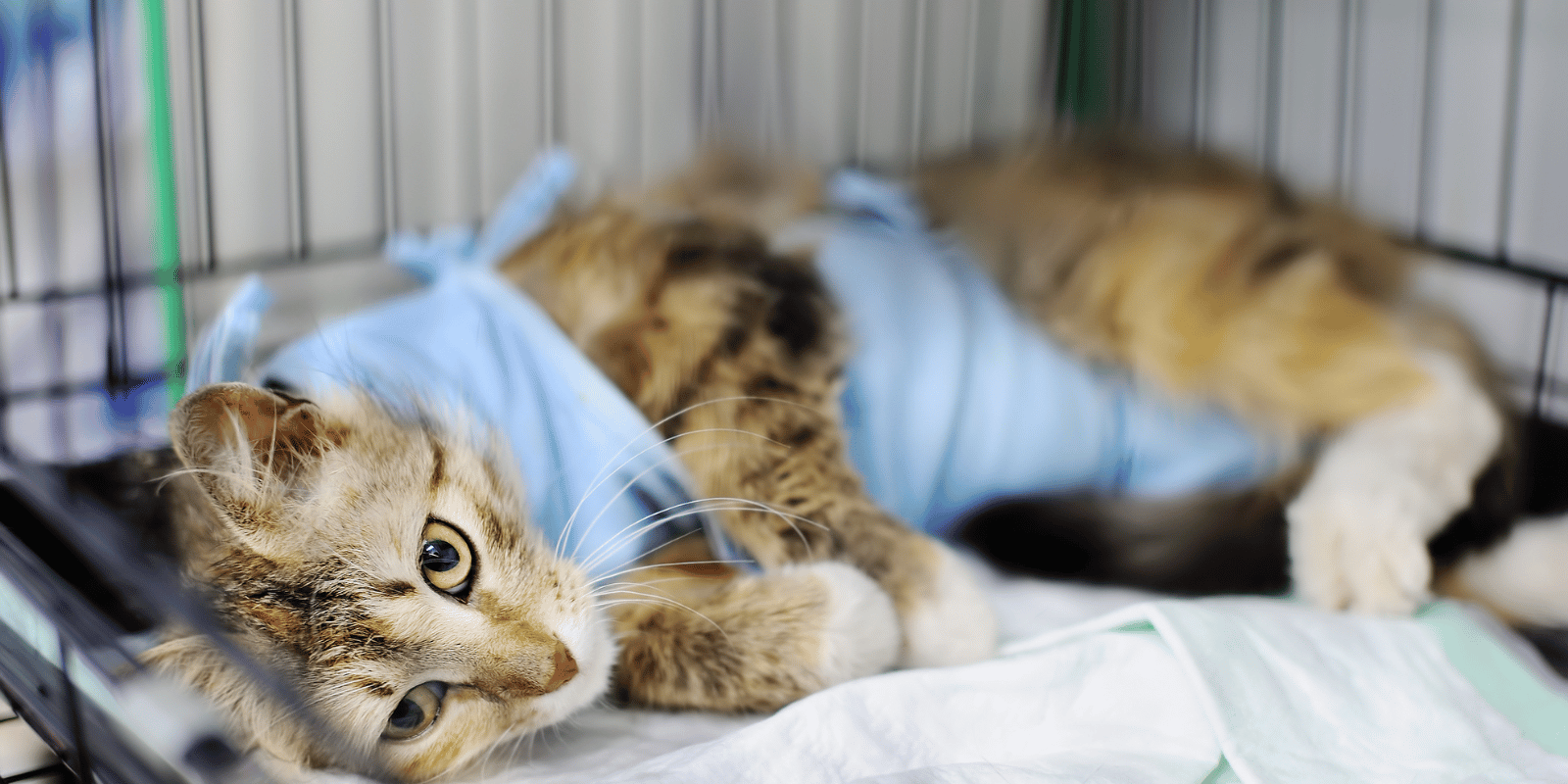Canadians tend to be financially savvy and buy insurance to cover a multitude of unexpected situations. Of course, we have universal health insurance, but the average Canadian family still spends about $4,000 a year on additional health insurance. There is also a plethora of additional insurance products that appeal to Canadians.
We buy health insurance while out of province/country, travel insurance for lost luggage and other mishaps, mortgage insurance, critical illness insurance, consumer protection insurance to extend warranties, liability insurance, car insurance, house insurance for fire, theft and floods and the list goes on. Surprisingly, though, one very worthwhile insurance product, of which many pet owners are not aware, is pet health insurance.
Pet health insurance is designed to cover the medical care needs of a pet throughout its life, but unlike provincial health care and more like Blue Cross®, pet insurance is designed as private health insurance and a pet owner gets to choose the type of insurance plan that meets their needs and budget.
Every year the sophistication of available veterinary medical and surgical care improves and today the majority of such procedures used in human medicine are available for our pets. The catch is that this sophistication comes at a price and in recent years, especially with the impact of Covid and the corporate changes that have occurred within veterinary medicine, the costs are high and ever-increasing.
The other challenge is that there's no government-funded health plan for pets and pet owners must pay for the care of their pets with after-tax dollars out of their own pocket. The impact on many families can be shocking and devastating, especially when the bill is high and unexpected, as over half of Canadian families live from pay cheque to pay cheque. In situations like this, pet insurance can literally be a lifesaver for our furry friends.
Types of Pet Health Insurance Policies
There are three main categories of pet insurance available to pet owners.
Accident Only
You can purchase a policy that only covers only Accidents. These policies are very affordable because the risk to the insurance company is relatively smaller. With urban leash laws being generally well adhered to, the risk of a pet being hit by a car is far less than decades ago. However, other types of accidents can occur, and treatment and recovery can be quite expensive. Having accident-only pet insurance coverage would be very helpful in these situations but you would lack coverage for illnesses such as cancer and diabetes which can also be quite costly throughout a pet’s life.
Accident and Illness
To avoid situations like the above, a pet owner may purchase an Accident and Illness policy. It not only avoids the potential hazy area of what is an accident but also covers illnesses of any kind, which are, by far, the most common problems affecting our pets. The premiums are usually higher for an accident and illness policy, but the coverage is very extensive and pet owners have the ability to decide how much risk they want to accept, such as selecting a higher deductible, which will lower the monthly insurance premium. An owner thus can tweak the policy to create an affordable premium for their budget.
Wellness Plans
The third type of policy is not strictly speaking an insurance product, as insurance is designed to cover unknown or unforeseen medical problems that could affect a pet at any time in the future.
Wellness Plans are intended to provide coverage for the known preventive and routine health procedures that most pets are expected to experience during their lifetime. This would include spaying and neutering, vaccines, deworming, routine annual blood tests and preventive medications against internal and external parasites. Although some companies will sell this policy on its own, usually they are added as a “rider” to the accident only or accident and illness policy.
These policies are designed to help pet owners budget throughout the year for their pet’s routine and preventive care needs. Bayer Animal Health has done surveys of pet owners that indicated that 43% of owners didn’t go to their veterinarian regularly because they could not afford it, as the bill was due in a lump sum at checkout. Yet, the majority indicated that if they could budget for it, they would, indeed, have the preventive procedures completed. These Wellness policies do just that through a monthly premium, instead of having to pay the full lump sum after a vet appointment.

How Does Pet Insurance Work?
Once a pet owner selects a policy that suits them and their budget, an owner will pay a monthly premium (usually through direct debit from a credit card or their bank). Furkin Pet Insurance policies are paid monthly but are considered "annual policies", meaning the premium is guaranteed to remain the same for at least 12 months. At the end of that year, the premium may increase or decrease depending upon a number of factors such as whether or not the cost of veterinary medical care has changed in the past year. Some insurance companies also vary premiums based on how many claims have been made. This is called Claims Risk Management (CRM). Furkin Pet Insurance does not practice CRM, so no matter how many claims you make, claims made will not affect your premium in future years. See commonly asked pet insurance FAQs.
Depending upon the insurance company, your pet’s medical records may be required for review either before the policy is issued or when you make your first claim.
What Does Pet Insurance Cover and Not Cover?
Unlike universal health care with us humans, in which costs are so high that over 50% of all tax revenue in Canada struggles to keep up with the costs in an inefficient system, pet insurance is intended solely to cover the unexpected and unknown. Consequently, pet insurance does not cover pre-existing conditions. This is why it's important to consider enrolling in pet insurance as early as possible.
Any condition that either has demonstrated clinical signs or symptoms or was documented in your pet’s health records prior to the issuing of the pet insurance policy is likely to be considered pre-existing. If it was a minor issue, such as a single bout of diarrhea 2 years ago, that could well be considered temporary or cured. However, if your cat has diabetes, then it will be considered permanently pre-existing, as that is a chronic and incurable condition.
What Pet Insurance Covers
If your pet has no pre-existing conditions, for most companies, future illnesses or injuries are generally covered under an accident and illness policy except for routine and preventive care or elective procedures. That said, it is prudent to ask questions and read the policy of any insurance company for specific exclusions or limits, as not all the details are in the brochures. For example, Furkin Pet Insurance covers additional items that other companies don’t or charge extra for such as sick visit exam fees, taxes, and over $3,000 in additional pet owner support benefits.
Furkin will cover all breeds of dogs and cats, but other companies may not cover certain breeds, certain conditions, or have excessive waiting periods for certain conditions. All these little details are spelled out in the policy, so it is worthwhile to take a few minutes and read them to make sure you understand the policy. Understanding how your policy works ahead of time will go a long way in setting your expectations and ensuring you have a positive experience.
What Pet Insurance Doesn’t Cover
Pet insurance companies don’t cover pre-existing conditions and as mentioned above, unless you purchase a wellness policy, pet insurance will not typically cover preventive, routine, or elective procedures. Most pet insurance companies also do not cover preventive dental procedures including routine dental cleaning and, if necessary, the dental extractions that accompany waiting too long to have your pet’s teeth cleaned. However, if your pet fractures an otherwise healthy tooth, most companies will offer coverage to have that tooth removed.
How Is the Monthly Premium Determined?
A pet owner’s first decision is to determine how much coverage is likely to be needed on an annual basis to cover their pet’s needs. The higher the policy coverage or limit, the higher the premium. Although words like “unlimited” are attractive, remember that usually results in a significantly higher premium. According to NAPHIA, roughly 90% of annual claims are less than $7,500 and 98% of claims are less than $15,000.
For any chosen policy, the three main factors in determining how much your monthly policy premiums are:
- Where do you live (postal code)? Veterinary medical costs vary highly across the country and between urban and rural settings.
- What breed is your pet? A giant breed, like a Great Dane, will have a higher premium than a small breed.
- How old is your pet? Although puppies and kittens have their fair share of problems, as pets age the number of potential problems usually increases.
All three of these factors are beyond the control of a pet owner. However, they can lower their premium if they are willing to accept a slightly greater risk or responsibility for the potential medical care. They do this by choosing the Reimbursement Rate and/or the Deductible levels. Here is a list of some common insurance terms.
Reimbursement Rate
Every claim that is submitted to the insurance company for reimbursement represents 100% of the amount owed to the veterinary practice. The reimbursement rate represents the amount of the total eligible expenses owed for which the insurance company is responsible – usually 70%, 80% or 90%. Higher reimbursement rates mean more risk and responsibility for the insurance company and that results in a higher premium; the lower the reimbursement rate, the lower the premium.
Deductible
There are usually different deductibles offered by pet insurance companies. Some are per condition, others per claim, and others have just one annual deductible regardless of conditions or claims. Furkin uses a single annual deductible but more general information on deductibles can be found in this pet insurance deductibles guide.
In general, the larger the deductible chosen by a pet owner, the less risk for the insurance company and the lower the premium. Additionally, some pet insurance companies, such as Furkin, will increase the deductible slightly when your pet reaches a certain age, eg. 5 and 10 years of age to keep the premiums affordable throughout the life of your pet.
Do You Really Need Pet Health Insurance?
Clearly, this is a personal decision for each pet owner. However, many owners are totally unfamiliar with just how costly excellent veterinary care has become. Even straightforward diagnostics and minor treatment for a simple case of diarrhea could amount to a bill of over $1,000. Major orthopedic surgery to repair a broken bone or a torn knee ligament (which is very common) could be $6,000 to $8,000 or more.
Most Canadian families consider their pets to be important members of the family, yet they are challenged every month to create any savings. Being faced with such high outlays could well be devastating and may result in having to take on large amounts of debt or even have their beloved pet euthanized because they cannot afford the treatment. Having pet insurance creates a win-win scenario. The pet owner has peace of mind in knowing they are now financially in a position to handle the vast majority of medical scenarios that could happen to their pet. The decision to treat or not treat is now solely based upon what is in the best interests of their pet and not on economics. And the pet receives the very best veterinary care in a timely manner, as pet insurance offers coverage for visiting your regular veterinarian, referral veterinarians, or emergency hospital veterinarians. With Furkin Pet Insurance, you not only have coverage at home but also while travelling across Canada or the United States.
If you can financially handle an unexpected multi-thousand-dollar veterinary bill with minimal or no hardship, then having a pet insurance policy is perhaps not as important. However, the majority of pet owners are not in that position, so having insured medical coverage can make the difference between life and death.
When and What Policy Should I Acquire?
There are a handful of pet insurance companies with a variety of policies available in Canada and although they are similar in how they work overall, there can be significant differences between the companies and the policies. Policies that are available today are very different from those that were available 10 or 20 years ago. So, if you had a not-so-positive experience with a previously insured pet, you may be pleasantly surprised today.
In general, pet insurance companies are more owner and pet-centric. Because company brochures are designed by marketing departments, they will tell you most of the key features of a specific policy. However, they won’t tell you everything. For this information, it’s recommended that you read the policy. If you are left with any questions, call the company and ask for clarification on any questions you might have. A Furkin Pet Insurance Care Team Member would be happy to assist.
In most cases, the best time to purchase a pet insurance policy is the moment you acquire your puppy or kitten. It is commonly assumed that because they are so young, they won’t have any medical issues. Nothing could be further from reality. The other benefit of insuring at a young age, and before they develop any problems, is that there won’t be any pre-existing exemptions to the policy. Here are some other tips for new puppy or new kitten parents.
When choosing a company, the premium cost will also be a consideration. On the website of each company you are considering, there will be a short form to get a quote. With Furkin, you can get a quote online or over the phone. After inputting your pet’s information such as age, breed, and postal code, you will have a few coverage options to choose from. Furkin offers three different deductibles to fit your budget.
Pet insurance, especially when purchased while your pet is young, is an excellent means by which you can provide the very best care for your pet while protecting your personal finances. The hope is that you will never need to make a claim, as that implies your pet has never had an accident or been ill. However, if you do have to make a claim, the processing time is quick (at Furkin about 50% of claims are reimbursed within 24 hours) and you know you are in the best position to offer the very best medical care despite escalating veterinary costs.

.png?width=554&name=FUR-Blog-Vaccines%20featured%20(1).png)

